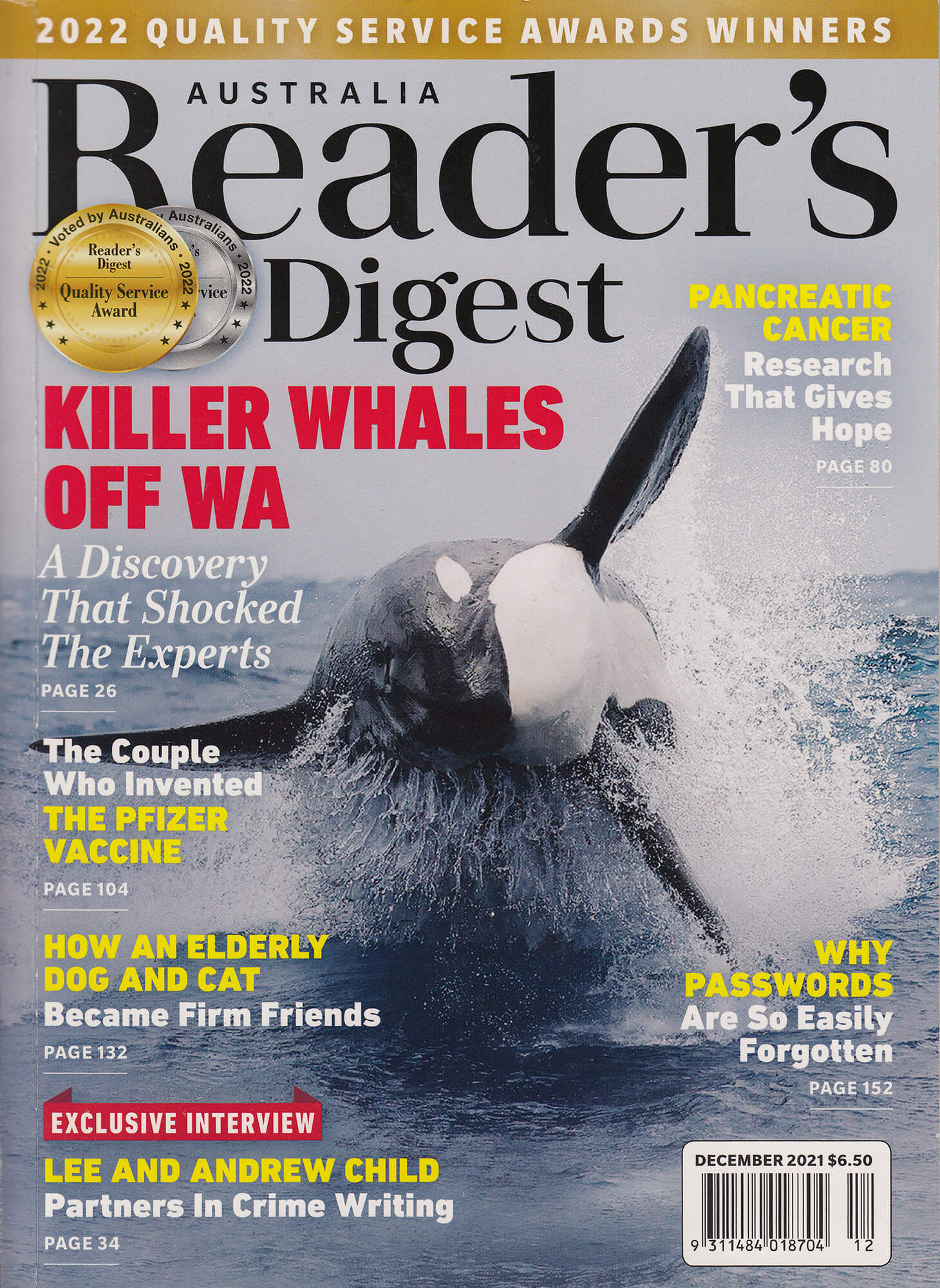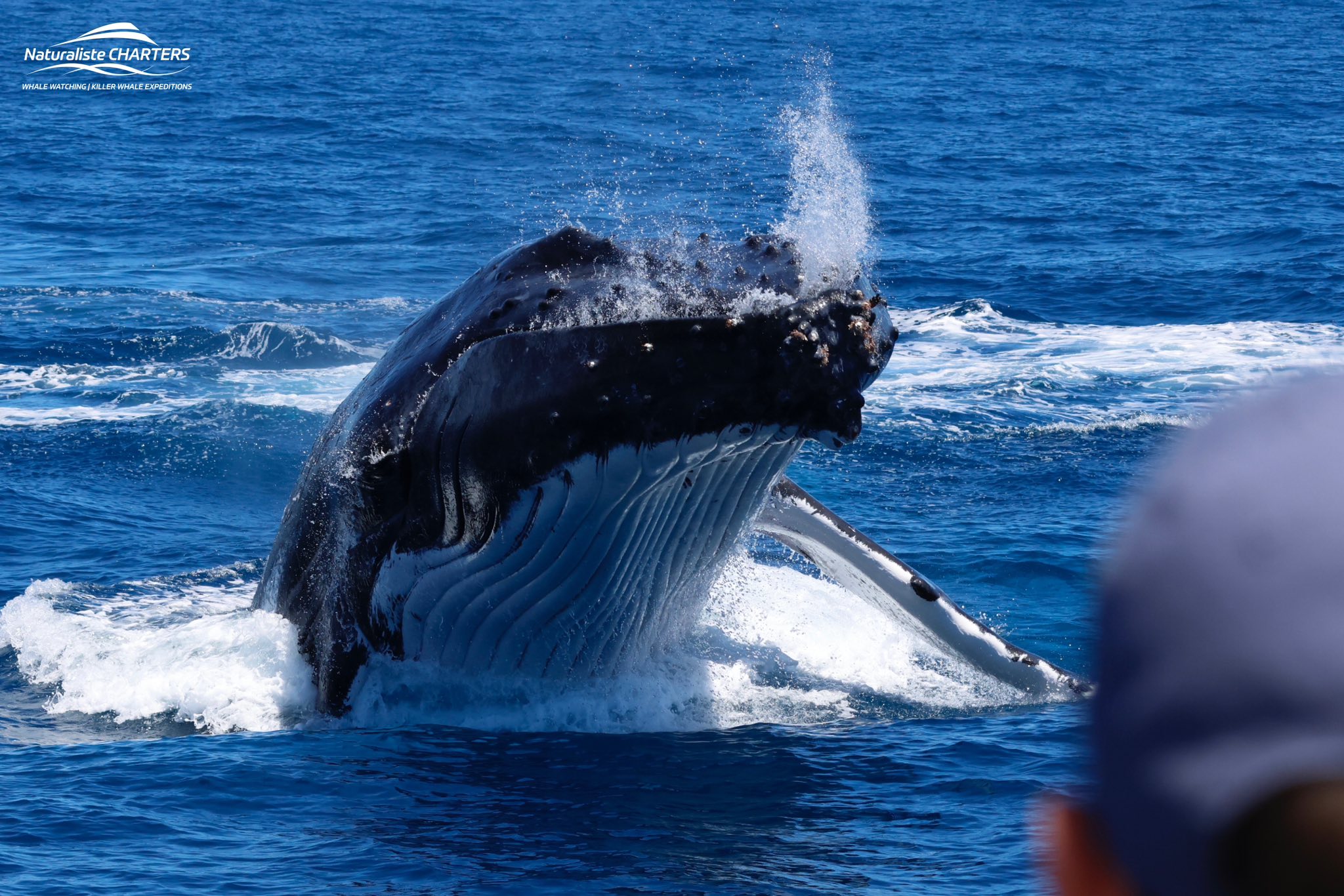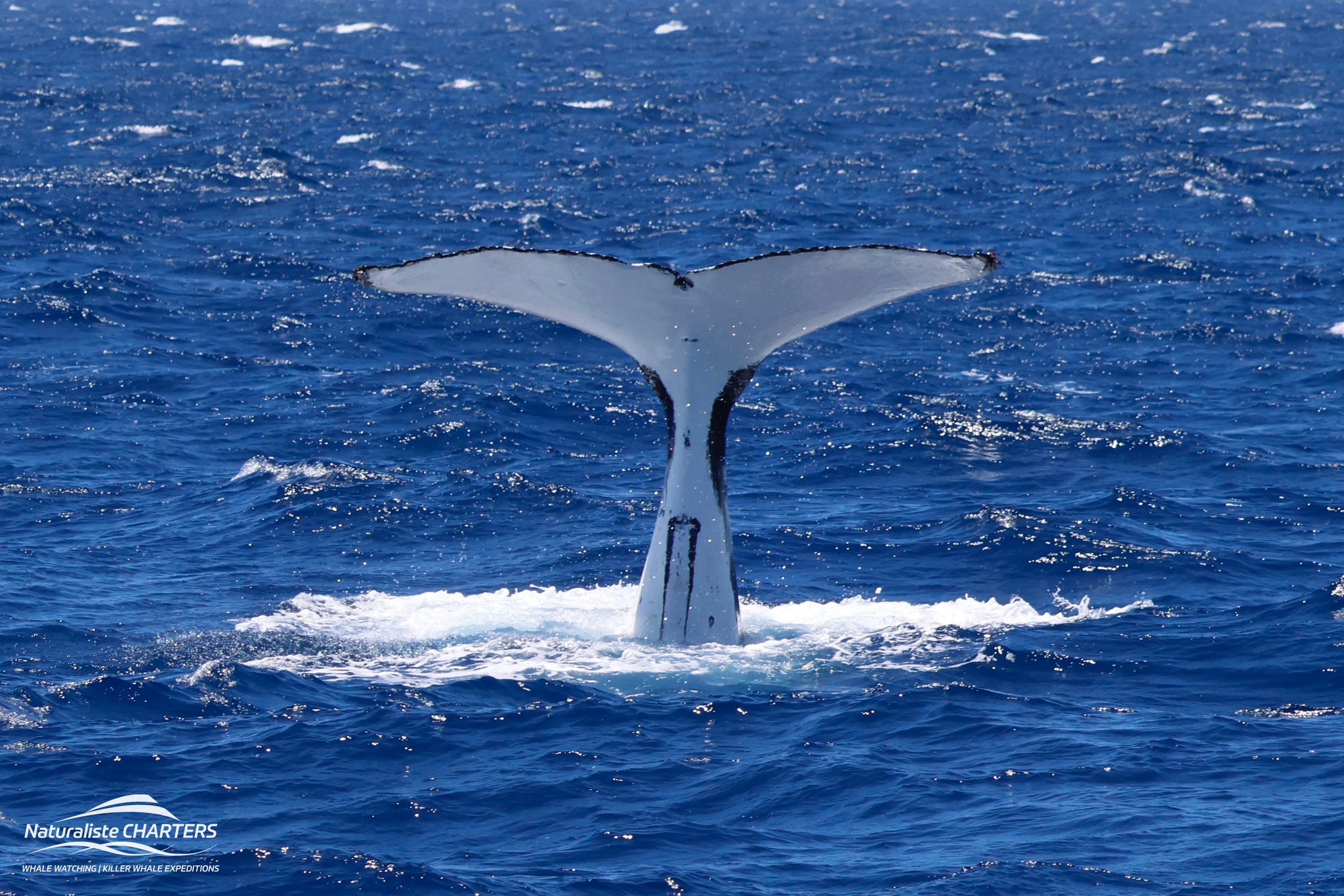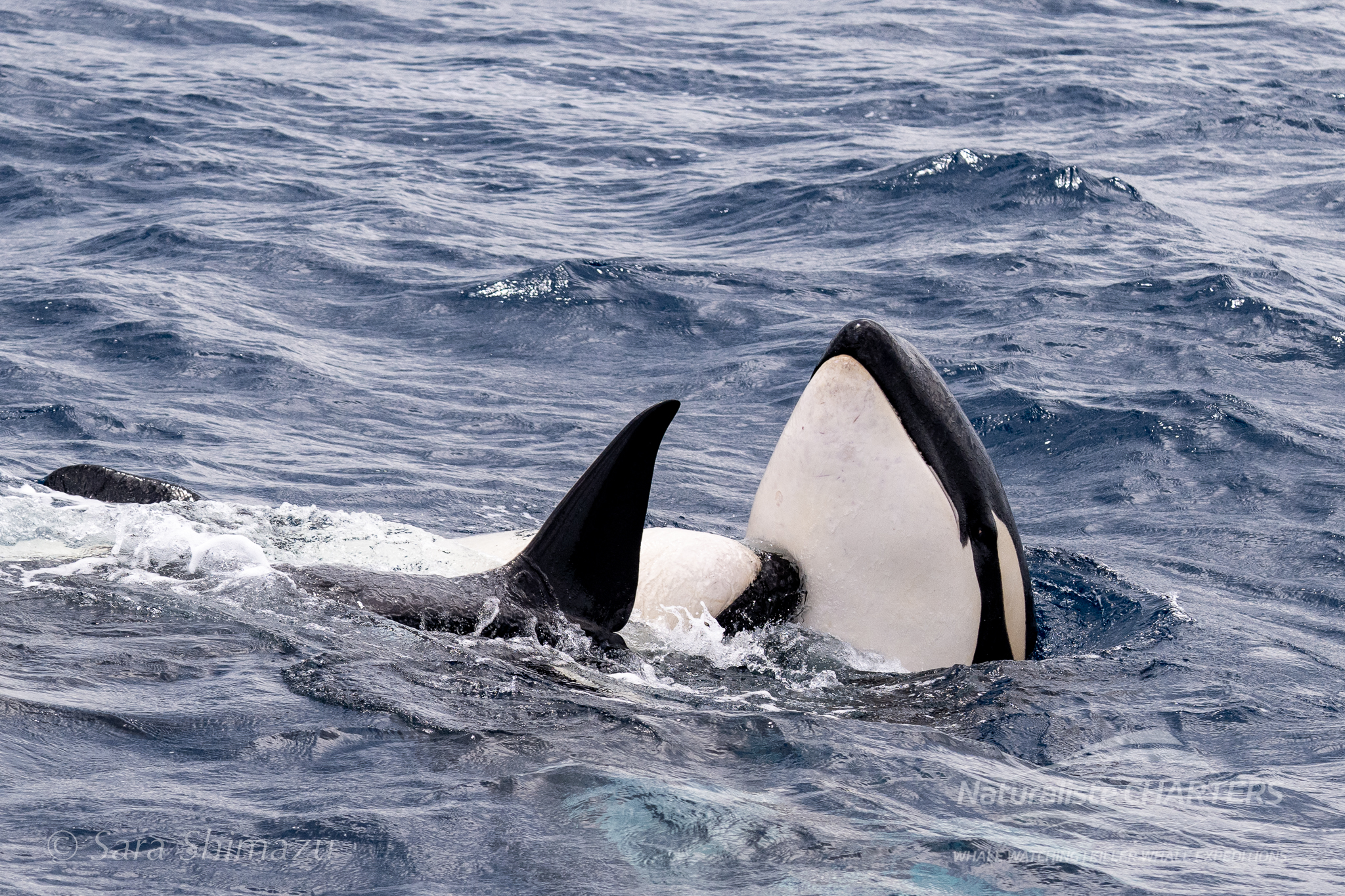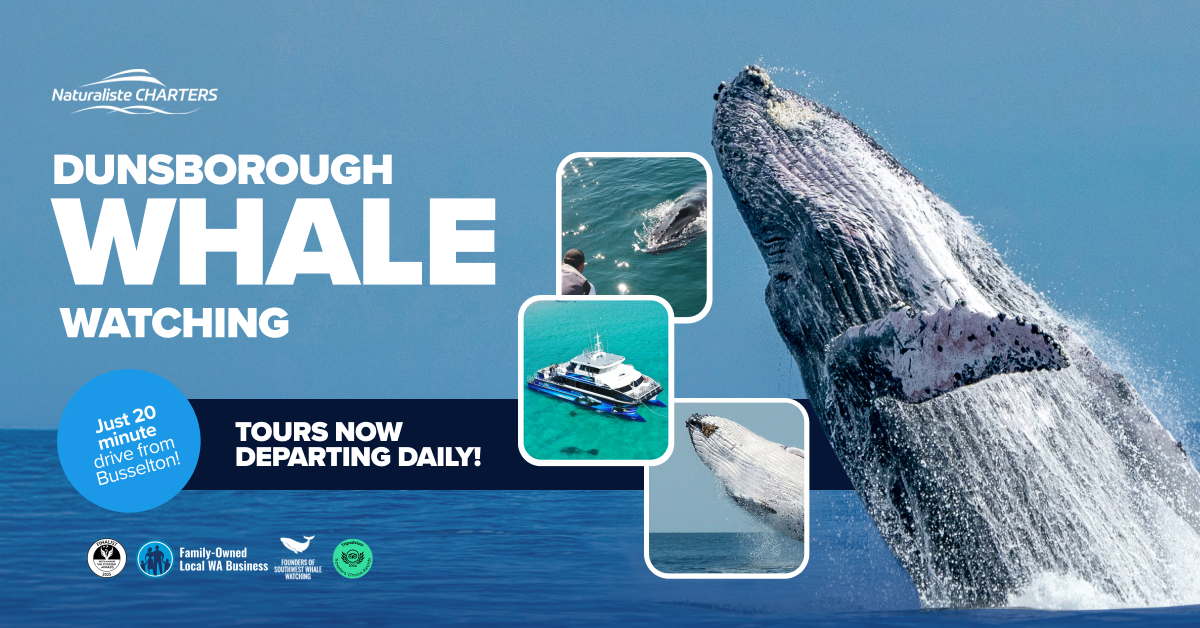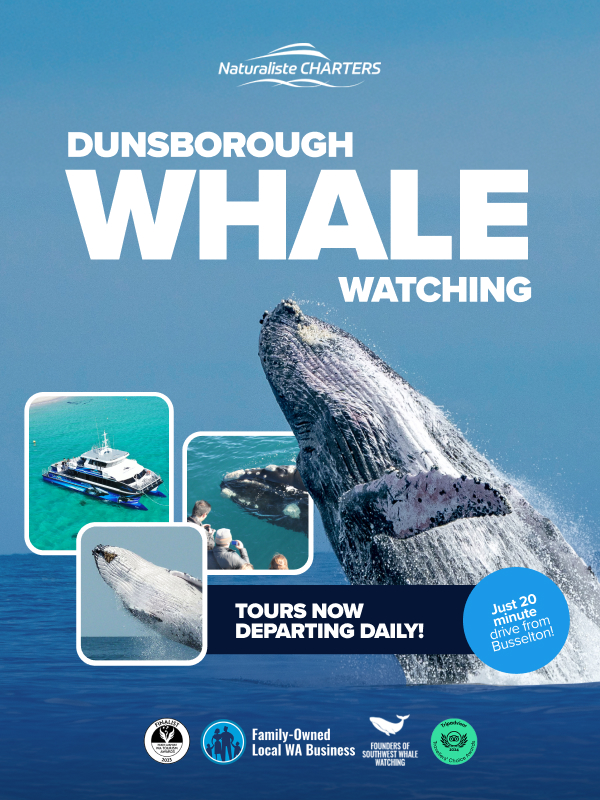In this short guide, WA photographer Keith Lightbody shares the fundamentals of whale photography—fast shutter speeds, smart focus, and stable technique—so your next tour delivers images you are proud to print and share.
Observing a whale in the wild is a truly remarkable spectacle that leaves a lasting impression. Witness these magnificent creatures in their natural habitat. Engaging in impressive behaviours like leaping, fluking, slapping, and spy hopping, evokes a sense of wonder and joy. To preserve this moment in its utmost clarity and beauty. Meanwhile, mastering the art of photographing whales requires a comprehensive understanding of the tricks and techniques involved.
It’s not an easy task doing wildlife photography. Especially on days where the whales are deep diving and you’re not too sure how whale behaviour works. Below we have a few tips and tricks for recommended equipment, settings, and accessories to use. This will help you to take the best photographs in an ever changing environment and weather conditions.
Using the best equipment
It’s advisable to use a modern mirrorless camera (e.g. Nikon Z8, Canon R5) for their fast and clever focusing. Although DSLR and point-and-shoot cameras also work well. For Point and Shoot cameras, a bridge zoom is a better option because of the long focal length ranges these cameras feature. They also typically offer a SPORTS mode which is ideal for whale photography. Opt for a camera with a decent frames-per-second rate for smoother captures. A higher megapixel rating is advantageous. It allows for cropping during post-production without significant pixelation issues. When it comes to lenses, consider bringing a selection (but only change lenses inside the cabin!). A wide-angle lens is ideal for close encounters when whales are near your boat. While a longer focal length works better for capturing whales in the distance. Alternatively, a zoom lens with a versatile focal range (e.g. 100-400mm, 70-200mm) can be a great help.
Using a memory card with a higher download speed ensures that your camera’s buffer won’t suddenly stop in the midst of a burst of action. This speed is typically indicated on the card itself. CFexpress cards can be as fast as 3400 MB/s while SD cards max out at 300 MB/s however cheaper and slower cards will still work fine in short bursts. Utilising a faster card enhances the likelihood of capturing a greater number of behavioural shots in a single sequence. The best shot is often unpredictable.
Best setting choices
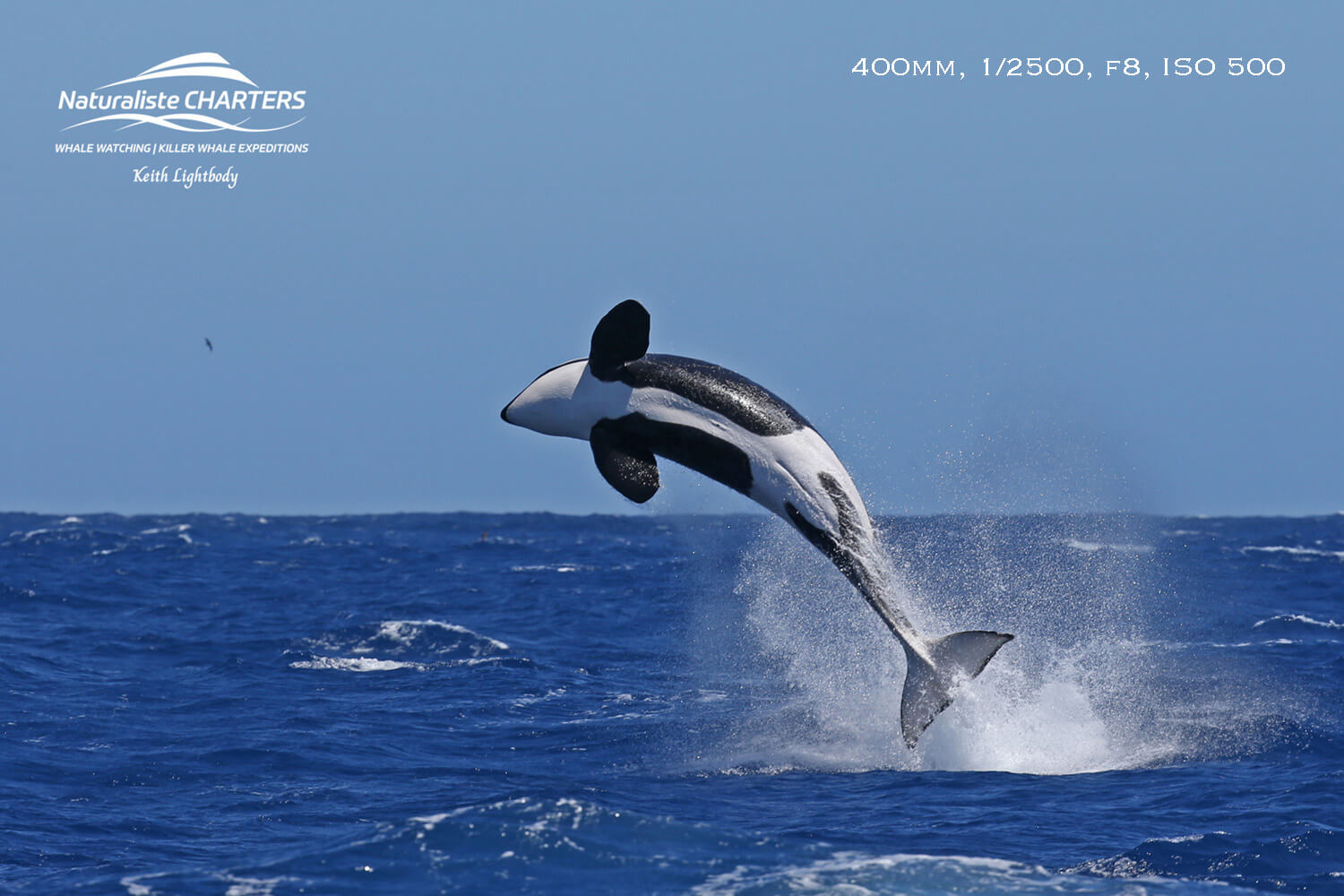
Shutter and Aperture
To effectively capture whale behaviours like tail or fin slapping, breaching, and other activities. It’s recommended to maintain your camera’s shutter speed for zoom lenses at a minimum of 1/2000 sec or faster. Wide angle lenses can use slower shutter speeds. As a trick, instead of repeatedly pressing the shutter release, switch to continuous shooting mode to capture multiple shots when the whales surface. This way, you’ll have a variety of excellent shots to select from.
Using Manual mode with AUTO ISO is ideal when you are on a rocking boat and do not know in which direction the whale will next appear e.g. shutter speed 1/2000, aperture f8, AUTO ISO.
For a distant photograph, an aperture of around f5-f8 is set. However, when the whale is closer to the boat, select a smaller aperture, around f10-f13. This will achieve a greater depth of field.
Vibration Reduction
Both cameras and lenses can have stabilization features so make sure they are turned on! If your lens offers a stabilization feature and you’re photographing from a boat, opt for the Active setting. This compensates for boat movement.
Bringing accessories and back up equipment
Ensure you have extra batteries and memory cards on hand to avoid missing any spectacular moments. Nothing is more frustrating than a drained battery or a full memory card interrupting a planned photo session. Additionally, when selecting the optimal whale-watching equipment, remember to include a lens hood and lens cleaning kit to combat sea spray.
Combating changing weather conditions
Weather conditions will vary during your boat trip, potentially impacting your camera settings. In sunny conditions, there’s a chance of slight over-exposure, particularly on the whale’s white or reflective areas. You can view your histogram to check for blown highlights or turn on your camera’s highlight alert or “blinkies” feature. Over bright areas can be avoided by using exposure compensation e.g. -1 ev or adjusting your camera settings e.g. using a faster shutter speed.
In the event of cloudy conditions where the sun intermittently emerges and disappears, opt for Auto white balance on your camera.
Tips and Tricks
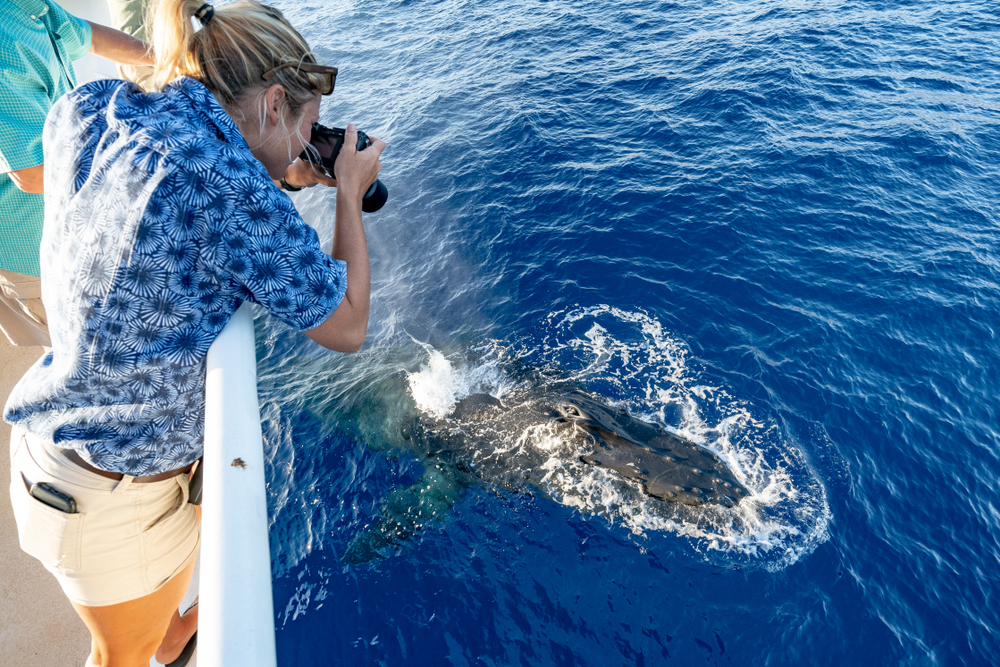
Whenever possible, especially on larger whale boats, try to position yourself as close to water level as you can. This will significantly improve your angle for capturing amazing photographs of these incredible creatures.
Best locations for Whale Watching
Whale Watching in the Margaret River region, Western Australia is fantastic and you are sure to receive ample opportunities to get that dream image. Augusta and Dunsborough Whale Watching tours are available in the region. For the ultimate photography experience I recommend a Bremer Canyon Killer Whale Expedition from Bremer Bay.
We hope you’ve acquired some valuable tips and techniques that will enhance your ability to capture outstanding whale photography with your good camera. Venture out, dedicate time to continue practising. And above all, relish in the experience of being surrounded by these majestic creatures of nature on your Whale Watching Dunsborough Tour.
About the Author
Keith Lightbody is a professional wildlife and nature photographer based in Western Australia, celebrated for his captivating imagery and his dedication to both education and conservation through photography.
-
Early Beginnings & Background
Raised on a farm in Mundijong, WA, Keith developed an early appreciation for the natural world. He transitioned into photography while working as an information technology teacher, introducing digital cameras to consumers around 1994. -
Photography Focus & Style
Keith’s work spans a dazzling array of subjects: from vibrant wildflowers and birds to marine life such as orcas (killer whales), and even hang gliders. His photography is characterised by rich detail, striking compositions, and a deep empathy for the natural world. -
Achievements & Recognition
In 2014, Keith won two prestigious categories—Our Impact and Threatened Species—in the Australian Geographic ANZANG Nature Photographer of the Year competition. His evocative entries included:-
Salinity by Twilight, a poignant landscape illustrating environmental change.
-
Social Drinking, a delicate moment featuring Baudin’s and Carnaby’s black cockatoos at a farm pond.
-
-
Teaching & Outreach
Keith is a passionate educator, offering numerous courses and workshops:-
He leads wildlife photography sessions at the remote Eyre Bird Observatory, offering field instruction amid the Great Australian Bight’s natural beauty.
-
Through the Albany Summer School, Keith teaches wildlife and wildflower photography, covering technical skills like composition, metadata, post-processing, and mirrorless camera operation.
-
He’s a regular guest speaker and demonstrator for groups such as the Wildflower Society of Western Australia, where he demonstrates macro techniques live, including focusing, lighting, exposure bracketing, and subject care.
-
-
In the Community
Keith’s presence extends across the photography and naturalist communities. He frequently hosts presentations—from casual meetups like York Talks! to educational outings in Perth—and generously assists fellow photographers with technical guidance and encouragement.His photography also contributes to local conservation and tourism efforts. He’s credited with many wildlife and coastal images used by organizations such as Bremer Bay’s Community Resource Centre and Naturaliste Charters, where his photos enrich birdwatching and marine wildlife narratives.

